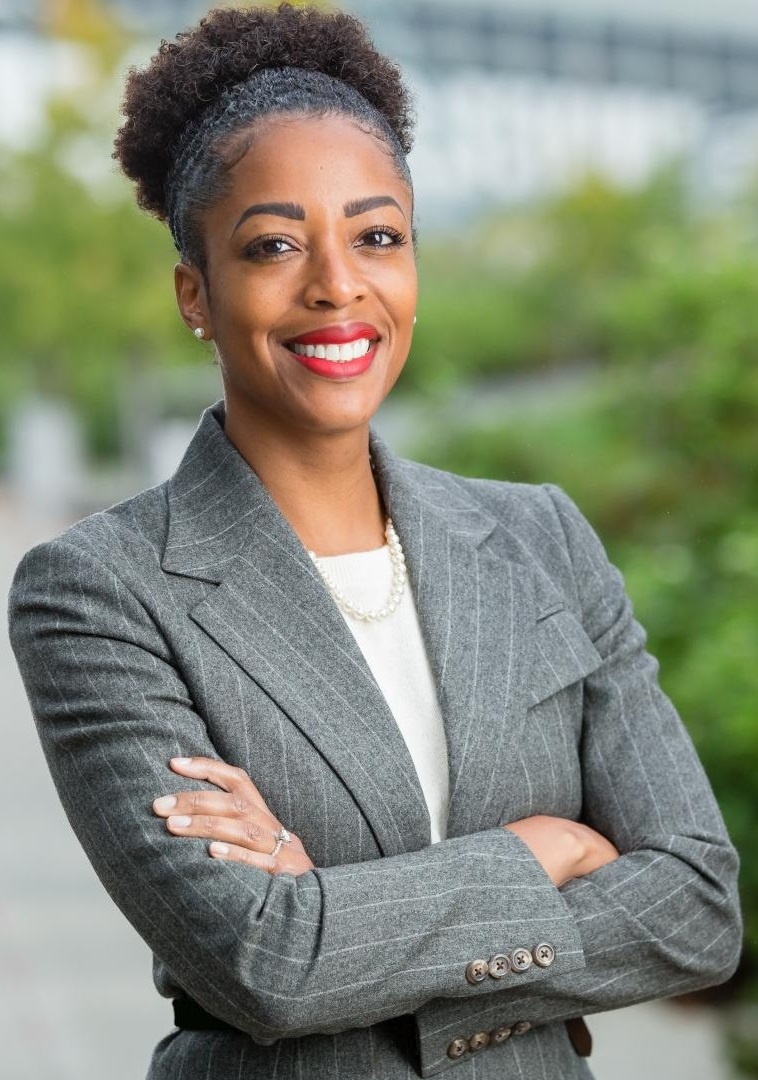OCIO assets near $2 trillion after six-month 17.4% jump
by charles | Comments are closed06/20/2018
Eighty-one firms have updated their AUM and contact information for our latest Outsourced Chief Investment Officer (OCIO) list.
They include four new listings: Deutsche Bank with $15.5 billion, Ellwood Associates with $1.2 billion, LCG Associates with $0.382 billion, and Ballentine Partners with $6.6 billion in discretionary OCIO assets.
Our total reported OCIO assets have grown 17.4 percent in just six months. That’s double the year-over-year increase we measured over all of 2017. And, almost all of that is organic growth in firms we were already covering.
That’s what we call exponential growth!
Our OCIO coverage continues further below. It includes our updated list of all vendors and an analysis of industry growth.
Read More »Where do chief investment officers come from?
by charles | Comments are closed05/16/2018
Every year there are about 50 to 100 US nonprofit (tax-exempt) and family office CIO searches and that number will climb as more ultra-high-net-worth families (over $100 million AUM) form offices, create foundations, and hire professional investment talent.
PwC forecasts a near doubling in global AUM over nine years, from $84.9 trillion in 2016 to $145.4 trillion in 2025, and predicts the US share of this global wealth pie to rise from $46.9 trillion to approximately $71.2 trillion over the same period.
But where will families and institutions find these investment heads? Asset owners want to know where to find good candidates, portfolio managers want to know what their chances are of landing a CIO job, and marketers for external money managers want to know whom to call.
Some families and institutions will select the OCIO option (outsourced chief investment officer) and place their assets with an outside firm, but most will choose internal management.
As search consultants, we recruit and fill positions within three broad categories: nonprofit institutions, family offices, and the for-profit investment world of Wall Street investment banks, insurance companies, mutual fund managers, RIAs, hedge funds, and consulting firms.
All public pension systems, most endowments, and many foundations, health systems, associations, charities and corporate pension plans publish their fund returns and we use that information to rank and identify the top performing funds, chief investment officers, and senior asset managers. Find the best performing funds and you are likely to find the best talent.
Most nonprofit funds over $1bn and about one third between $500 million and $1bn have CIOs. In 2011, we counted about 1,300 CIOs and heads of investments at tax exempt institutions.
Today we track about 1,100 chief investment officers and another 800 up-and-comers in the nonprofit sector as the increase in endowments, foundations, and other nonprofits with a billion or more in AUM has been offset by a drop in the number of corporate DB plans.
Family offices: the best CIOs you’ve never heard of
Read More »
What does it cost to run an investment office?
by charles | Comments are closed04/01/2018
In early 2016 certain Congressional committees sent letters to 65 major private universities asking for information about their endowments.
It was worded as a polite request, but it came from people who could, for instance, compel the endowments to adopt a strict spending rate (like private foundations) instead of the more flexible regime they currently enjoy as “charities.” Needless to say, the schools all coughed up the information forthwith.
Apparently, this data-dump just went into filing cabinets, and neither the schools nor Congress have been eager to share those reports with the general public. But our clients (nonprofit boards and “Wall Street” asset managers) find this information useful, so we scrounged up copies of 15 of the responding letters from various sources. The other 50 schools have kept theirs out of sight.
We were especially curious to see what the schools had to say about endowment management costs, which has always been a cloudy issue for us.
Commonfund agrees. In a 2015 study they opined that:
…unlike other factors that affect investment returns, such as asset allocation and the many types of operational and investment risk, costs are almost certainly the least well understood.
See: Commonfund Institute: Understanding the cost of Investment Management (October 2005).
As we said in our OCIO report, the perceived cost of managing the endowment is a major factor in the decision to outsource, or not to.
It’s not the only factor, but a big one. But how can a board make that decision if they don’t know whether they’re spending more or less than their peers? And, whether outsourcing will actually save them any money?
Investment returns can be benchmarked to the second decimal place, but the costs of managing those investments are harder to come by.
So, we’ve done our own analysis of the cost data reported by those 15 schools. It has some limitations, but we seem to be the only ones to have ransacked these letters.
Read More »
The Harvard endowment: mark-to-make-believe
by charles | Comments are closed03/21/2018
Before current management terminated the old compensation structure, the huge salary packages at HMC stumped us. Every time we compiled our CIO compensation studies, we wondered how those paychecks could be so large when performance was so mediocre.
Some fault poor communication, siloed investment teams, and misaligned incentives, but we hear there were other issues – questionable benchmarks and bonuses paid “off-the-mark.”
Here’s how it worked.
Most of HMC’s assets such as listed equities, fixed income and hedge funds, relied on public market prices. And the private equity and venture capital portfolios were invested with outside managers who were responsible for valuing the assets.
But the natural resources portfolio was owned directly by HMC and valuations relied on third party appraisers hired by the staff who, in turn, controlled the process.
There were performance benchmarks, of course. But staff set the benchmarks and beating those benchmarks depended upon valuations and valuations depended on a process controlled by the staff. In other words, the carry was paid off of unrealized marks on illiquid holdings and superior performance was all but guaranteed.
Even better, there was no easy way to argue against those benchmarks and valuations. As Matthew Klein wrote in the Financial Times about “private equity’s mark-to-make-believe problem,”
If it’s challenging to figure out what a thing is “worth” when some of the smartest people on the planet, armed with the fastest computers and the biggest datasets, are constantly discussing and betting on its value, it’s downright impossible for investment managers focused on illiquid assets to assess the value of anything they own until they exit their positions by selling to someone else.
Not surprisingly, there was great enthusiasm for these investments within the endowment.
As one source put it to me recently, in Las Vegas, the house wins, but at HMC, the players made the rules.
Fun with FASB
Non-profits must show their investments at “fair value” per FASB 124 on their audited financial statements. That’s straightforward for publicly-traded securities. But things get cloudier for illiquid alternative assets with no quoted prices: so-called “level 3” items. And, it gets cloudiest of all for assets not in the hands of independent third-party managers.
Absent quoted prices the reporting entity must have some reasonable process for establishing those values and for adjusting them up or down from period to period. If they pass that sniff test, and management has signed off on the process, then the external auditors will probably not second-guess them.
We don’t doubt that HMC had a rational-looking basis for the numbers they printed; but when the process can be influenced by insiders, and those insiders could be said to have a monetary interest in the reported values, there is room for skepticism. We think the bare fact that there have recently been very significant write-downs under the new management and changes in the way compensation is paid should speak for itself.
Read More »Women in finance: Rukaiyah Adams
by charles | Comments are closed12/20/2017
Rukaiyah Adams, chief investment officer at Portland’s Meyer Memorial Trust – doing good and investing well
The $90 billion dollar Oregon Pension ranks among the top fifteen in the US, but how many in the industry know the current board chair, Ms. Rukaiyah Adams?
Ms. Adams was born in Berkeley, CA, grew up in diverse, northeast Portland, and returned to her home city after a stellar legal and investment career in California and New York.
She splits her professional duties between the $750 million AUM Meyer Memorial Trust, where she is chief investment officer and the $90 billion Oregon Investment Council, where she is board chairperson.
Present day Portland is a little easier to reach than it was when President Thomas Jefferson sent Captain Lewis, Second Lieutenant Clark, and the ‘Corps of Discovery” west to explore the vast uncharted American territories.
Still, Portland is not Wall Street and, at the west end of the Oregon Trail, just far enough off the beaten track to feel a bit isolated.
Yet, the state is home to the Oregon Investment Council, one of the nation’s largest pension funds, several well-run university endowments, three first-rate investment consulting firms, and the Meyer Memorial Trust, established with a bequest from Mr. Fred G. Meyer, a twentieth century supermarket magnate.
When Mr. Meyer died in 1978 at the age of 92, he left two million shares of stock to the newly formed foundation. And thanks to a buy-out deal in the early days of private equity, the value of the trust’s holdings soared. KKR and the Oregon Investment Council, in one of their first joint buyout forays, purchased the Fred Meyer Co. in 1981, which did wonders for the stock.
Ms. Rukaiyah Adams joined the foundation as investment head about four years ago, after managing a $7bn fixed income and derivatives fund for The Standard, a Portland-based financial services company.
We caught up with Ms. Adams earlier this year and wondered what the investment view looked like from her outpost on the Pacific rim.
Ironically, with only a handful of African-American chief investment officers in the entire US, the progressive northwest has two, Ms. Adams, a Portland native, and Joseph Boateng, from Ghana originally, and the long-serving investment head of Casey Family Programs in Seattle, the largest non-government provider of foster care in the country.
We wanted to know what drew her to the asset management industry, her views on investing, and what advice she might have to offer to encourage more women and minorities to get into the business.
Read More »




